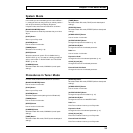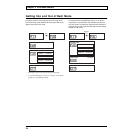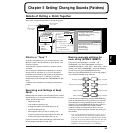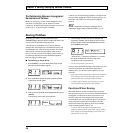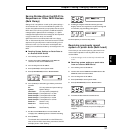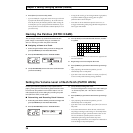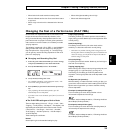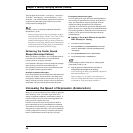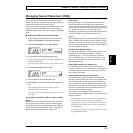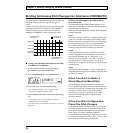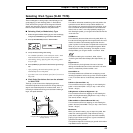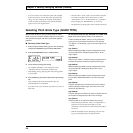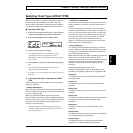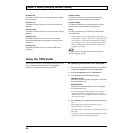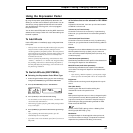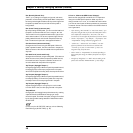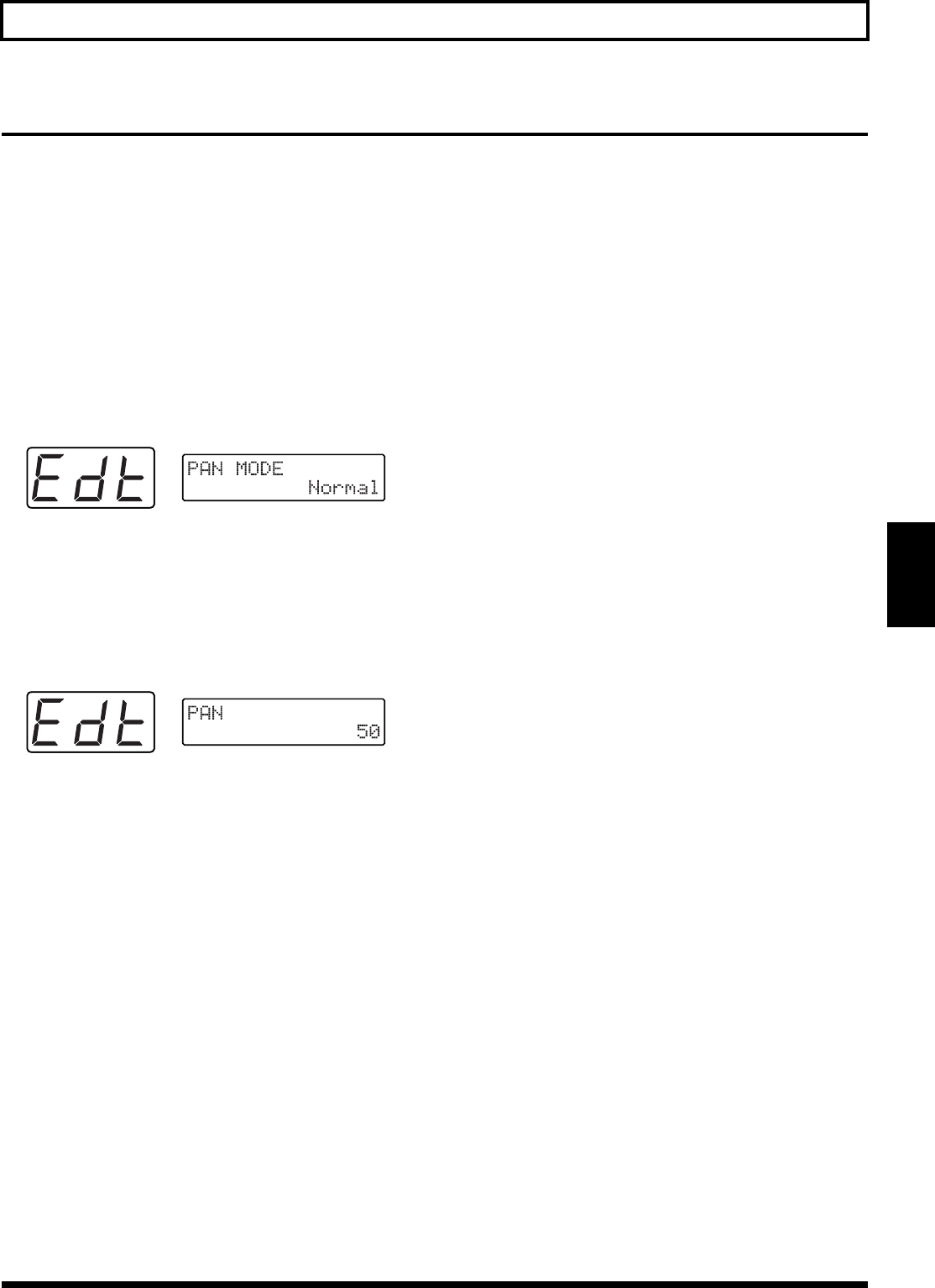
41
Chapter 5 Setting/Changing Sounds (Patches)
Chap.
5
Changing Sound Placement (PAN)
You can pan each of a patch’s two tones to its own stereo
location. For example, you can pan one tone to the far left in
the stereo field, and the other to the far right.
You can also create complex stereo movement using a variety
of pre-programmed stereo effects. This is done using the
COMMON “PAN MODE” and “PAN” settings in Patch Edit
mode.
■ Setting and Saving Sound Placement
1. Select the patch whose pan position you want to set,
and press [COMMON] to enter Patch Edit mode.
2. Press [PARAMETER] to select “PAN MODE.”
fig.5-14
3. Use [VALUE] to select the desired pan mode.
* For more details, see the subsequent section, “Available value
for PAN, and their effects.”
* If you are not using Normal or Cross Tones, proceed to step 6.
4. Press [PARAMETER] to select “PAN.”
fig.5-15
5. Turn [VALUE] to select the desired value.
6. Press [WRITE] to perform the Patch Write operation (p.
36).
* After performing the Patch Write operation, you will
automatically return to Play mode.
* If you don’t want to save the Patch, press [PLAY] to return to
Play mode.
◆ Available values for PAN, and their effects
Normal:
With a setting of 0, all sounds will be panned to the center.
Changing the value within the range from -50 through 50
will cause the panning to change correspondingly. Both the
1st and the 2nd tone will be panned to the far right with a
setting of 50, or to the far left with a setting of -50.
Cross Tones:
With the setting at “0,” the selected tone is placed in the
center of the stereo field. By changing the values across a
range of -50 to 50, the tone’s position shifts left or right: when
a tone is set to 50, it is panned all the way to the right; setting
it to -50 pans it all the way to the left. Therefore, by
programming a patch with one tone set to 50 and the other to
-50, you can create a rich, widespread stereo sound.
1-6, 6-1:
With this setting, each string is panned separately. When you
select 1-6, the strings’ sounds are placed in sequence from the
left: String 1, String 2, all the way up to String 6. Conversely,
with 6-1, the opposite positioning is used, i.e. String 6, String
5, all the way down to String 1.
Odd-Even, Even-Odd (Odd, Even):
This setting separates odd- and even-numbered strings, and
places them left and right. With Odd-Even, the odd-
numbered strings—1, 3, and 5—are panned left, and the
even-numbered strings—2, 4, and 6—panned right. “Even-
Odd” will produce the same effect as if “Odd-Even” were
exchanged left to right.
Random Both, Random 1st, Random 2nd:
The stereo placement of the 1st and 2nd tones changes
randomly. “Random 1st” and “Random 2nd” cause only the
corresponding tone to move around randomly—the other
tone is placed in the center.
Alternate Both, Alternate 1st, Alternate 2nd:
The perceived location of the 1st and 2nd tones assigned to
each string is panned alternately to the left and right each time
a tone is sounded. For patches having only one tone playing,
the tone moves back and forth repeatedly. With a patch using
both tones—but with the 1st tone to the right and the 2nd tone
to the left—a special stereo effect is created that differs from
what you get with the Random setting.
“Alternate 1st” and “Alternate 2nd” causes only the
corresponding tone to jump back and forth—the other tone is
placed in the center.
* Pan settings have no effect on the internal reverb and chorus.
* You can hear the selected panning effect only through
equipment that can produce stereo sound— and is connected
to the GR-33’s MIX OUT using two cables—or when using
stereo headphones.
* The PAN setting made here is ignored if you have a monaural
type of MULTI-FX selected.



